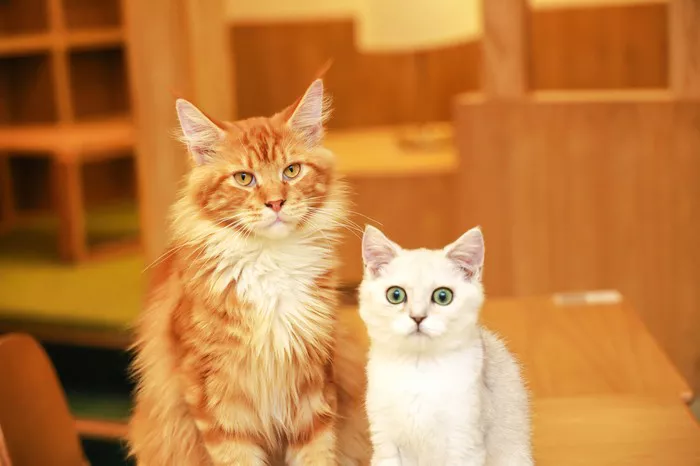Cats and kittens, with their endearing antics and playful demeanor, have long been cherished companions for humans. However, when it comes to training these feline friends, pet owners often find themselves grappling with a common question: Is it easier to train a cat or a kitten? In the world of pet ownership, understanding the nuances of training these independent creatures is essential for fostering a harmonious relationship. This article delves into the intricacies of cat and kitten training, exploring the challenges, methods, and rewards associated with each.
Training a Cat:
Training an adult cat comes with its own set of challenges. Unlike dogs, cats may not inherently seek approval or strive to please their owners. They operate on their terms and may resist commands that go against their instincts. Nevertheless, with patience, consistency, and the right approach, training a cat is not only possible but can also be a rewarding experience.
Understanding Cat Behavior
Before embarking on a training journey, it’s crucial to comprehend feline behavior. Cats are territorial animals with strong instincts for self-preservation. They may exhibit behaviors such as scratching, marking territory, and hunting, which can be misconstrued as undesirable in a domestic setting. However, understanding these behaviors helps tailor training to redirect or modify them positively.
Positive Reinforcement Techniques
Cats respond well to positive reinforcement. Reward-based training involves offering treats, praise, or affection when a cat exhibits the desired behavior. This method creates an association between the action and a positive outcome, encouraging the cat to repeat the behavior. It’s essential to catch the cat in the act and reward promptly to reinforce the connection.
Clicker Training for Cats
Clicker training is a popular technique that involves using a clicker device to signal when a cat performs a desired behavior. The click serves as a consistent and immediate marker, followed by a reward. Over time, cats learn to associate the click with a positive outcome, making clicker training an effective tool for teaching tricks and commands.
Training a Kitten:
Kittens, on the other hand, present a unique training scenario. Often described as a “blank canvas,” kittens are more adaptable and open to learning from an early age. This makes training certain behaviors and habits easier compared to adult cats. However, raising a well-behaved kitten requires consistent guidance and positive interactions.
Early Socialization
Early socialization is a critical aspect of kitten training. Exposing kittens to various people, environments, and stimuli during their formative weeks helps them develop into well-adjusted and confident adults. Positive experiences during this period contribute to a kitten’s overall behavior and receptiveness to training.
Litter Box Training
One of the first training tasks for a kitten is litter box training. Most kittens instinctively use a litter box, but reinforcement and proper setup are crucial for long-term success. Placing the litter box in a quiet, accessible location and using a suitable litter type contribute to positive litter box habits.
Basic Commands and Play
Kittens are naturally playful, and incorporating training into playtime can be highly effective. Using toys to encourage desired behaviors, such as jumping or climbing designated areas, allows kittens to learn while having fun. Basic commands like “sit” and “stay” can be introduced gradually during interactive play sessions.
Factors Influencing Training Success
While both cats and kittens can be trained, several factors influence the success of training endeavors. Understanding these factors helps pet owners tailor their approach to the individual needs of their feline companions.
Individual Personality
Every cat, whether adult or kitten, has a unique personality. Some cats may be more receptive to training, while others may be more independent or reserved. Recognizing and respecting these individual traits is essential for effective training.
Previous Experiences
A cat’s previous experiences, especially if they were negative, can impact their willingness to engage in training. Cats that have faced trauma or harsh treatment may require extra patience and gentleness during training sessions to build trust and confidence.
Breed Characteristics
Different cat breeds exhibit distinct characteristics that can influence their trainability. Some breeds are known for their intelligence and eagerness to learn, while others may be more independent. Understanding breed-specific traits helps tailor training approaches to match individual needs.
Health and Age
The health and age of a cat play crucial roles in training success. Older cats may have established habits that are harder to modify, requiring more time and patience. Additionally, health issues or pain can affect a cat’s ability to participate in training activities.
The Rewards of Feline Training
Regardless of whether a cat or kitten is being trained, the rewards of successful training are manifold. A well-trained cat contributes positively to the household, fostering a strong bond with their human companions. From basic commands to addressing behavioral issues, training enhances the overall well-being of the feline and the satisfaction of the owner.
Conclusion
In the age-old debate of whether it’s easier to train a cat or a kitten, the answer lies in recognizing and embracing the unique qualities of each. While training an adult cat requires patience and understanding of their individuality, kittens present an opportunity for early guidance and shaping behaviors positively. Ultimately, the success of feline training hinges on consistent, positive reinforcement, a deep understanding of feline behavior, and the dedication of pet owners to nurture a harmonious relationship with their beloved cats.


























